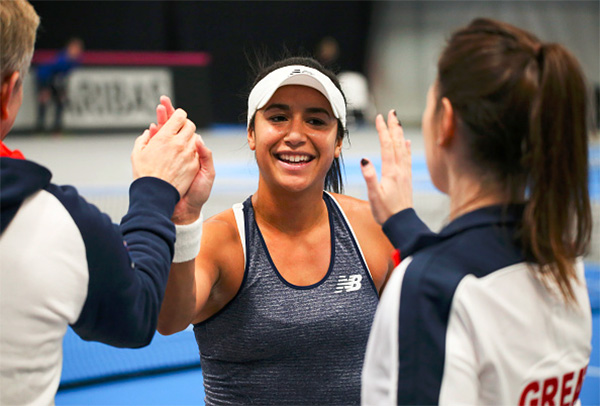10 Things To Know: Rome
Every week on wtatennis.com we’ll bring you 10 Things To Know about the week – who’s playing, where and more. This week the Road To Singapore goes through the Internazionali BNL d’Italia.
1) Serena Williams debuts on the dirt.
The World No.1 has won Rome three times in her career – including back-to-back years in 2013 and 2014 – but injuries and illness have kept her out of the first half of the clay court season. Still in search of her first title of the year, could it come this week? She might have to go through two of the most in-form players to do it, including No.6 seed Simona Halep and No.4 seed Victoria Azarenka. She also took a doubles wildcard with sister Venus Williams.
2) Simona Halep aims for a clay court double.
Halep looked have put her early-season demons to rest with an emphatic run to the Mutua Madrid Open title. Dropping just one set en route, the Romanian will return to the Top 5 in next week’s rankings; might she pull off a major upset over Williams in the quarterfinals?
3) Victoria Azarenka balancing niggling injuries.
The Belarusian withdrew from last week’s tournament in Madrid with a lower back injury she said she picked up in her first round win over Laura Robson. Looking to maintain a clean bill of health ahead of the French Open, Azarenka has already proven she can play solid tennis on clay this season – winning two crucial rubbers in Fed Cup in addition to two wins in Spain. Projected to face Williams in the semifinals, how far will the former No.1 go?
4) How will Angelique Kerber rebound from her early Madrid loss?
No.1 on the Road to Singapore standings, Kerber suffered a suprising loss to Barbora Strycova in Madrid – the German had previously never lost a set in four previous encounters. Already a winner on clay at the Porsche Tennis Grand Prix, outdoor clay remains the final frontier for the Australian Open champion, who has yet to pass the quarterfinals at the French Open. She is all but guaranteed a tricky opening round opponent in either Jelena Jankovic or Eugenie Bouchard.
5) Can Garcia and Mladenovic keep up their streak?
Caroline Garcia and Kristina Mladenovic have been unbeatable since the start of the clay court season; with three straight titles in Charleston, Stuttgart, and Madrid, the Frenchwomen have won 13 straight matches and have beaten reigning Co-No.1s Martina Hingis and Sania Mirza in back-to-back finals. Taking out Bethanie Mattek-Sands and Lucie Safarova to win the Volvo Car Open, Garcia and Mladenovic are again seeded No.5 and could play Santina in yet another final.
6) Santina searches for a clay court title.
Hingis and Mirza have won a title on every surface but red clay – though their runs to the finals of Rome (2015), Stuttgart, and Madrid can’t be ignored. The pair are just one major trophy away from clinching a Santina Slam, and besides losses to Garcia and Mladenovic, have looked back to their best, losing just two games to Vania King and Alla Kudryavtseva (who beat them in Indian Wells) in last week’s semifinals.
7) All eyes on the Spanish quarter.
Garbiñe Muguruza and Carla Suárez Navarro are set to face off in the quarterfinals following difficult homecomings in Madrid. Muguruza lost a heartbreaking three-setter to Irina-Camelia Begu, while Suárez Navarro was dealing with an illness as she too lost in three sets to Samantha Stosur. Two of the best clay courters on tour, how will Suárez Navarro – last year’s runner-up – fair in Rome against her countrywoman?
8) Vinci comes home.
Playing her first Italian event since reaching the US Open final, Roberta Vinci had muted expectations ahead of the Internazionali BNL d’Italia, having only made it to the third round once in 11 appearances. Seeded No.7 this week, she will open against a qualifier or Johanna Konta, the British No.1 who enjoyed a breakout run to the semifinals of the Australian Open, but will be likely less comfortable on clay compared to her potential Italian opponent.
9) Kvitova on clay.
Armed with a new coach and new philiosophy, Petra Kvitova has played some of her best tennis on clay this season, reaching the semifinals in Stuttgart and the third round of Madrid before running into nemesis Daria Gavrilova. Opening against Madison Keys or Andrea Petkovic, the two-time Wimbledon champion is projected to face Kerber in the quarterfinals.
10) And see where you can watch action from Rome on TennisTV!




